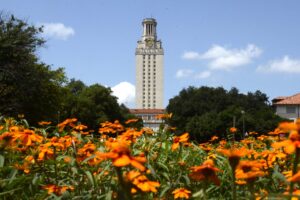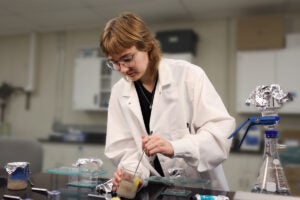“Converging Lines: Eva Hesse and Sol LeWitt,” which opens at the Blanton Museum of Art at The University of Texas at Austin on Feb. 23, celebrates the close friendship between two of the most significant American artists of the postwar era: Eva Hesse (19361970) and Sol LeWitt (19282007).
Organized by Veronica Roberts, the Blanton’s curator of modern and contemporary art, the exhibition will feature approximately 50 works, including many that have not been publicly exhibited for decades.
Although their practices diverged in innumerable, seemingly antithetical ways LeWitt’s work is associated with ideas and system-based conceptual art and Hesse’s is associated with the body and her own hand this presentation will illuminate the crucial impact of their friendship on both their art and lives. A scholarly catalog published in association with Yale University Press accompanies the exhibition and includes essays by Roberts, art critic Lucy Lippard and others.
“It is a privilege for the Blanton to present this exhibition, which highlights one of the most fascinating and important artistic friendships of the 20th century,” said Blanton Director Simone Wicha. “This presentation will shed new light on Eva Hesse and Sol LeWitt and provide a deeper understanding of their impact on one another, while capturing the vibrant nature of the artistic dialogues and collaborations that took root in New York City during the 1960s.”
Robert Slutzky, a former architecture professor at The University of Texas at Austin, introduced Hesse and LeWitt in New York in the late 1950s. They, and other artists including Robert Mangold, Sylvia Plimack Mangold, Robert Ryman and Lucy Lippard, all lived within close proximity of one another in the Bowery and supported one another in significant ways. In a 1993 interview, LeWitt noted, “The discussions at that time were involved with new ways of making art, trying to invent the process, to regain basics, to be as objective as possible.”
In spite of the dramatic differences in their artistic processes, Hesse and LeWitt nevertheless developed a close bond, evident in the extensive correspondence that ensued over the course of their more than decadelong friendship. In 1970, immediately upon learning of Hesse’s premature death from a brain tumor at the age of 34, LeWitt created “Wall Drawing #46” for an exhibition of his work in Paris. The work consists of a wall covered with “not straight” pencil lines that LeWitt drew as a way of paying homage to the organic contours that were a hallmark of Hesse’s art. This landmark work will be one of five wall drawings in the exhibition. All will be installed by artists who worked closely with LeWitt, with assistance from students at The University of Texas, in keeping with LeWitt’s longstanding interest in having students help create his work. More than an isolated gesture of affection, “Wall Drawing #46“ demonstrates how Hesse’s artistic influence shaped LeWitt’s practice in indelible ways.
Numerous works in the exhibition also illustrate the reverse: LeWitt’s impact on Hesse’s work. “Accession V,” a galvanized steel and rubber sculpture, responds to LeWitt in its use of the cube (a quintessential LeWittian and minimalist form); the sculpture also marks one of Hesse’s first attempts at working with outside fabricators, a practice commonly used by LeWitt at the time. The artists’ artistic dialogue is also evident in a striking 1969 Hesse drawing with gouache, silver paint and pencil that features stacked horizontal lines.
Other highlights include several important early LeWitt sculptures that have not been displayed in 50 years, a 1969 Hesse drawing from the collection of Agnes Gund, and several Hesse sculptures and drawings from the LeWitt Collection, The Museum of Fine Arts Houston and the Yale University Art Gallery.
An exciting roster of public programs will complement the exhibition, including lectures by art critic and writer Lucy Lippard, Pulitzer Prize-winning Boston Globe journalist Sebastian Smee, and curator Veronica Roberts, plus a film screening of “Tracing the Rope: Eva Hesse Life + Work,” with filmmakers Marcie Begleiter and Karen Shapiro in attendance.
“Converging Lines: Eva Hesse and Sol LeWitt” is organized by the Blanton Museum of Art.
Major funding for the exhibition is provided by the Henry Luce Foundation. The exhibition will be on display until May 18, 2014.
Support also is provided by Suzanne Deal Booth and David G. Booth, the Dedalus Foundation, and by the Terra Foundation for American Art on behalf of board member Marilynn Thoma, with additional gifts from the Berman Family Foundation, the Robert Lehman Foundation, Kathleen Irvin Loughlin and Christopher Loughlin, Lora Reynolds and Quincy Lee. The accompanying catalog is made possible by Jeanne and Michael Klein, Lannan Foundation, and by Michael Chesser in memory of his brother, Terry Johnston Chesser.




